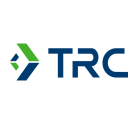Most of the energy in buildings is used to meet human needs—lighting, fresh air ventilation, heating, and cooling support our productivity, health, and comfort. We know that a significant portion of building energy consumption is wasted through a combination of missing occupant needs and sub-optimal design and operation. This challenge presents opportunity to improve building energy performance in ways that also contribute to people’s health, well-being and productivity.

A 2019 ASHRAE Journal paper titled Eliminating Overcooling Discomfort While Saving Energy addresses the challenge of making people more comfortable while saving energy, and was recognized as article of the year through the Journal Paper Award. Developed with several ASHRAE member colleagues, the article describes how “overcooling” in commercial buildings is often caused by controls programming based on “unsubstantiated engineering assumptions”. The article further explains how correcting these assumptions through inexpensive control logic modifications can drive better building energy efficiency and a more comfortable indoor environment for occupants – reducing cold complaints by as much as half! This article reflects results from numerous research projects over the last 10 years and the development of ASHRAE Guideline 36 High Performance Sequences of Operation (GDL 36).
The most common HVAC system used in commercial buildings in north America, VAV reheat, is susceptible to this over-cooling issue. Simply raising the thermostat setpoint does not solve the problem because the equipment and control logic behind the scenes is pumping too much cold air into the space, driving the temperature well below the thermostat setpoint. This causes occupants to be too cold in the summer when they are typically wearing lighter clothing and is less of an issue during the cold season when people wear thicker clothing.
The solution has been proven through recent research and incorporated into GDL 36. TRC is engaged in market transformation efforts to support wide scale adoption through field demonstrations, engagement with controls manufacturers to create standardized control logic libraries, and through novel new utility program designs. For buildings with relatively new HVAC control hardware, this measure can pay back in less than one year on energy savings while also improving comfort. Older controls hardware that need to be upgraded is likely to pay back in 5-10 years if the entirety of GDL 36 is implemented. We are excited about refining this estimate with results from our current demonstrations in California and New York.
These benefits are particularly relevant not only during the hot summer months, but also during the lower and variable building occupancy created by COVID-19. One of the primary energy savings features of GDL 36 is dynamic response to building loads, which offers the most savings during low-moderate occupancy—and represents something buildings owners/managers can do during COVID-19 to maximize savings during low occupancy and automatically and selectively switch back on HVAC systems in an efficient and effective manner as people come back to the office.
To learn more about this work and other industry-advancing building technology and commercialization research at TRC, contact Gwelen Paliaga, Technical Director .
